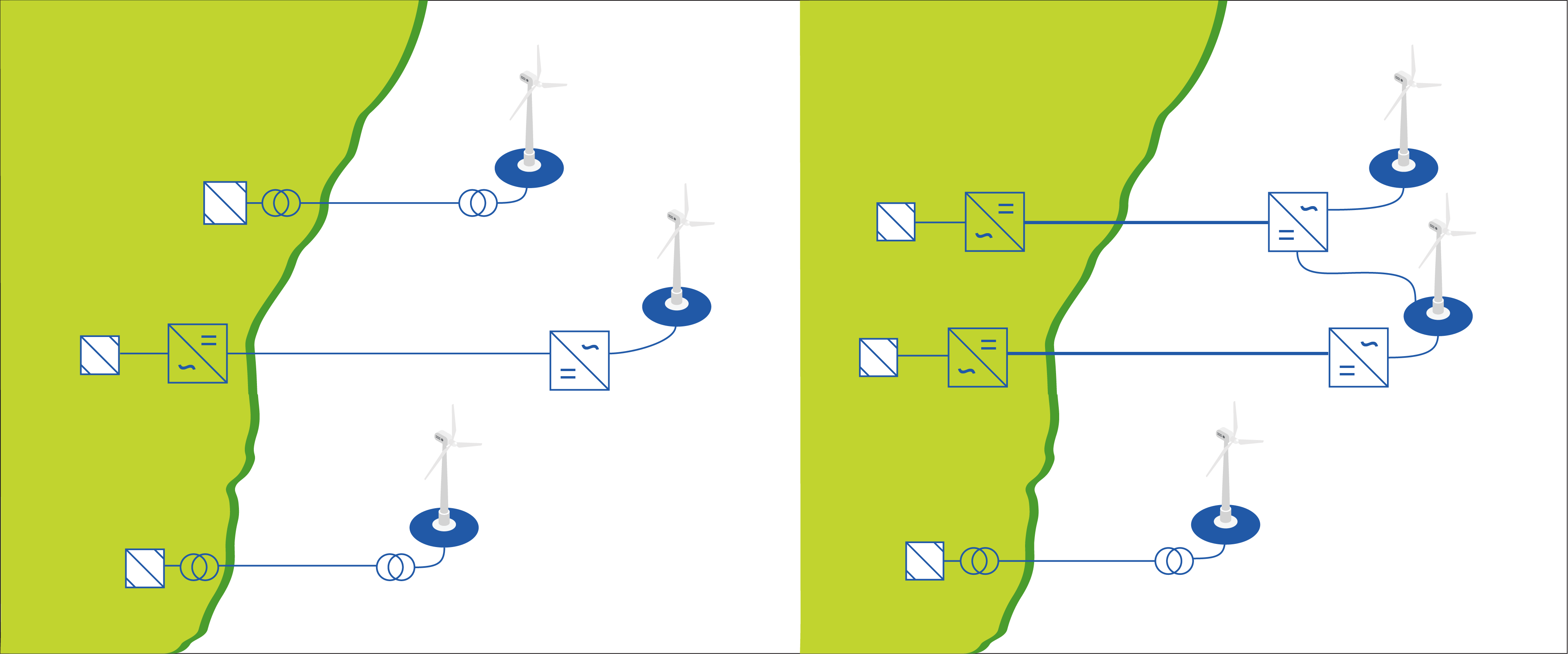
Offshore wind facilities typically generate power independently and deliver it to onshore substations via a point-to-point interconnection. Several factors, such as outages and network congestion, may impact the supply of this energy to the onshore network. The January 2022 “Meshed Ready Technical Requirements” draft, issued as Appendix G of Draft ORECRFP22-1 by the New York State Energy Research and Development Authority, essentially mandates the utilization of HVDC links to connect to offshore wind areas.
The solution being put forward will provide flexibility in making the supply of energy from offshore wind farms available at the “right place at the right time” by developing a “mesh-ready” design for offshore substations. Meshed interconnections between the offshore plants will improve the utilization of high-voltage direct current (HVDC) links by providing an alternate path for the offshore wind energy to reach the onshore transmission network.
Given the complexities, cost and maturity level of technologies required to implement HVDC grids, alternating current (AC) connections appear to be the right choice to create such an offshore mesh. This paper discusses the concept without consideration of the commercial agreements that might be needed among the independent system operator (ISO), utility, developers and mesh network owner for successful implementation.

